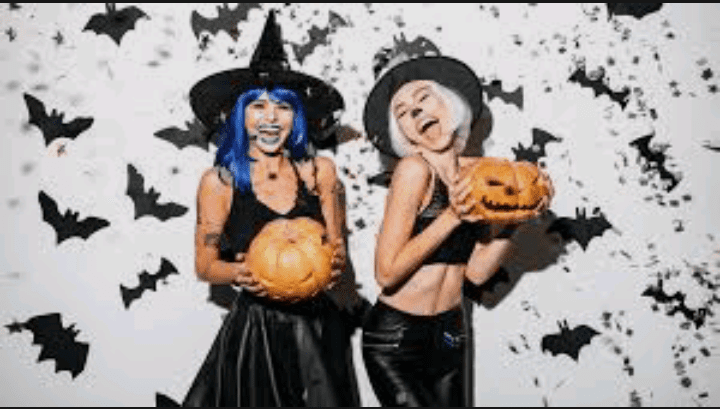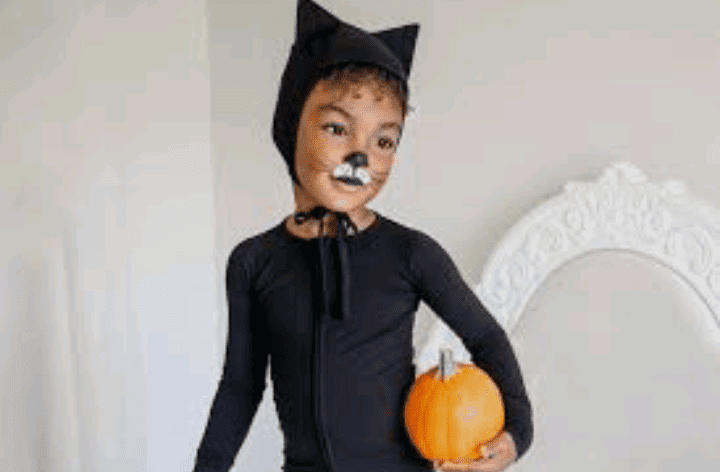DIY Halloween costumes are more than just a cost-saving alternative to store-bought ensembles; they are a canvas for boundless creativity and self-expression. In a world of ghouls, ghosts, and goblins, your unique handmade costume stands out like a beacon of individuality.
This article is your guide to the world of DIY Halloween costume creation, offering a simple yet comprehensive roadmap to help you navigate the exciting journey of transforming everyday materials into spooktacular masterpieces.
Halloween is a time when imagination runs wild, and DIY costumes provide the perfect outlet to bring those imaginative visions to life. From mythical creatures to pop culture icons, your options are limited only by your creativity. Whether you’re a seasoned crafter or a first-time DIY enthusiast, this guide is tailored to walk you through the process, offering tips, tricks, and inspiration to make your Halloween costume truly one-of-a-kind.
We’ll explore the essential materials and tools needed, break down the step-by-step creation process, and delve into budget-friendly tips that won’t break the bank. Discover the joy of repurposing old clothes, exploring thrift stores for hidden gems, and buying in bulk to maximize savings.
Safety and comfort are also paramount considerations, ensuring that your DIY masterpiece not only looks amazing but is also enjoyable to wear throughout the spooky celebrations.
So, whether you’re looking to transform into a mythical creature, pay homage to your favorite movie character, or simply unleash your wildest Halloween fantasies, join us as we embark on a creative journey into the world of DIY Halloween costumes. It’s time to dust off your crafting tools, gather your materials, and let your imagination run free as we make this Halloween truly unforgettable.
Read also: How to Make a Terrarium
DIY Halloween Costumes

1. Embracing Creativity
A. The Joy of DIY Halloween Costumes
DIY Halloween costumes offer more than just a way to save money. They provide an opportunity to showcase your creativity, express your personality, and stand out from the crowd. By making your own costume, you can customize every detail and ensure that your ensemble is one-of-a-kind.
B. Finding Inspiration
Before going into the crafting process, it’s essential to find inspiration for your DIY Halloween costume. Browse through online platforms, magazines, or even draw ideas from your favorite movies, books, or historical eras. The key is to choose a theme that resonates with you and allows you to showcase your personality.
2. Essential Materials and Tools
A. Building Your Costume Toolkit
To bring your Halloween vision to life, you’ll need a set of essential tools and materials. Basic items such as scissors, glue, and a sewing kit are essential, but depending on your costume idea, you may also require specialty items like fabric paint, cardboard, or LED lights. Make a list and gather your materials before you begin the crafting process.
B. Choosing the Right Fabrics
Selecting the appropriate fabrics is crucial for the success of your DIY Halloween costume. Consider factors such as comfort, breathability, and durability. Additionally, think about the color scheme and texture that will best complement your chosen theme. Don’t be afraid to mix and match fabrics to add depth and visual interest to your costume.
3. Step-by-Step Costume Creation
A. Planning Your Design
Before you start cutting or sewing, create a detailed plan for your costume. Break down the design into components and create a rough sketch or outline. This will serve as a roadmap for your project, ensuring that you stay organized and on track throughout the crafting process.
B. Costume Components: From Head to Toe
i. Headwear: Whether it’s a crown, hat, or mask, the headwear sets the tone for your costume. Use materials like foam, cardboard, or fabric to bring your headpiece to life.
ii. Tops and Bottoms: Consider the overall silhouette of your costume. Will it be loose and flowing, tight and structured, or a combination of both? Choose fabrics that align with your vision and provide comfort during wear.
iii. Accessories: Accessories such as belts, jewelry, or prop weapons can enhance your costume’s authenticity. Don’t forget to add personal touches to make your ensemble truly unique.
iv. Footwear: The right shoes can complete your look. Whether it’s boots, heels, or even customized shoe covers, ensure that your footwear is both comfortable and aligned with your costume theme.
C. Incorporating DIY Techniques
Depending on your costume idea, you may need to employ various DIY techniques. From basic sewing and gluing to more advanced skills like papier-mâché or even simple electronics for lighting effects, don’t be afraid to experiment and learn new skills along the way.
Read also: How to Knit a Scarf
4. Budget-Friendly Tips
A. Repurposing Old Clothes
One of the most cost-effective ways to create a DIY Halloween costume is to repurpose old clothes. Raid your closet or visit thrift stores to find base items that can be transformed into the foundation of your costume. With a bit of creativity and imagination, an old dress or pair of jeans can become the canvas for your Halloween masterpiece.
B. Thrift Store Finds
Thrift stores are a treasure trove for DIY costume enthusiasts. Explore the aisles and racks to discover unique pieces that can be incorporated into your costume. Vintage clothing, accessories, and even outdated electronics can be repurposed to add authenticity and flair to your creation.
C. Bulk Buying for Savings
If your costume requires a significant amount of a specific material, consider buying in bulk to save money. Online retailers and local craft stores often offer discounts on bulk purchases of fabrics, paints, and other DIY supplies.
5. Costume Safety and Comfort
A. Choosing Safe Materials
While creativity is paramount, safety should never be compromised. Ensure that the materials you use are non-toxic and flame-resistant, especially if your costume involves candles or other potential fire hazards.
B. Comfortable Wear
A successful Halloween costume not only looks great but is also comfortable to wear. Consider factors such as temperature, mobility, and visibility when designing your costume. Ensure that you can move freely and that your costume doesn’t impede your ability to enjoy the festivities.
6. Showcasing Your Masterpiece
A. Documenting the Process
Capture the different stages of your DIY Halloween costume creation through photos or videos. Documenting the process not only allows you to track your progress but also provides a unique opportunity to share your creative journey with others.
B. Showcasing on Social Media
Once your costume is complete, share it with the world on social media platforms. Join DIY communities and Halloween-themed groups to connect with like-minded individuals. Your creation may inspire others and become a source of inspiration for future Halloween enthusiasts.
Read Also: Operation and Maintenance of Grit
